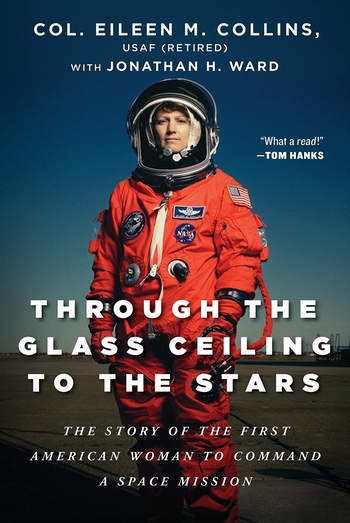Review: Through the Glass Ceiling to the Starsby Jeff Foust
|
| “I did the amount of work needed to get by—nothing more. I was not competitive,” she writes of her high school years. |
It's a story well worth waiting for. Collins is famous for being the first woman to pilot, and later command, a shuttle mission, flying four times on missions to Mir and the International Space Station as well as launching the Chandra X-Ray Observatory. It’s a conventional story of hard work and focus, but also one of good fortune and lucky breaks that, had any gone differently, might have kept her from becoming an astronaut.
While she became interested in space in elementary school amid the 1960s Space Race, she was not a star student, academically or athletically. “I did the amount of work needed to get by—nothing more. I was not competitive,” she writes. Only when she graduated from high school, and saw classmates win awards, was she motivated to excel. “I decided to push myself to be the best I could possibly be.”
That took her on a path from a local community college to the ROTC program at Syracuse University and then an Air Force pilot. She joined the Air Force shortly after the service started allowing women to be pilots, but in non-combat roles. While that kept her from flying fighter planes, she says the experience she got flying C-141 cargo aircraft, with large crews and complex missions, was good preparation for becoming a shuttle commander. Sher was taking other steps to burnish her resume to become an astronaut, including being selected for the Air Force’s test pilot school even as NASA was considering her astronaut application. (While selected to the astronaut corps as a pilot, she says in the book she was willing to become a mission specialist if that’s what it took to become an astronaut.)
| “I find it crazy that the first woman pilot and commander was me. How in the world did that happen?” |
She became famous for breaking the glass ceilings of the book’s title by being the first woman to be a shuttle pilot and a commander, but her accounts of the missions themselves are fascinating as well. STS-93, the first mission she commanded and which launched Chandra, suffered serious problems with the main engines that only became clear after landing. Only a series of fortuitous circumstances avoided an aborted mission or a tragedy. The other mission she commanded, STS-114, was transformed from a routine ISS cargo mission to a critical return-to-flight mission for the shuttle program after the loss of Columbia. After four flights, she said, she was ready to move on, in part to ensure flight opportunities for the astronauts who had yet to make a first flight.
“I find it crazy that the first woman pilot and commander was me. How in the world did that happen?” she writes near the end of the book, crediting it to her decisions and work ethic after high school. That is one of the reasons she wanted to write Through the Glass Ceiling to the Stars, she explained in an afterword that included a bulleted list of rationales that ranged from adding to the historical record of the shuttle program to inspiring the next generation. And, yes, to stop people from asking when she would finally write the book.
Note: we are using a new commenting system, which may require you to create a new account.
